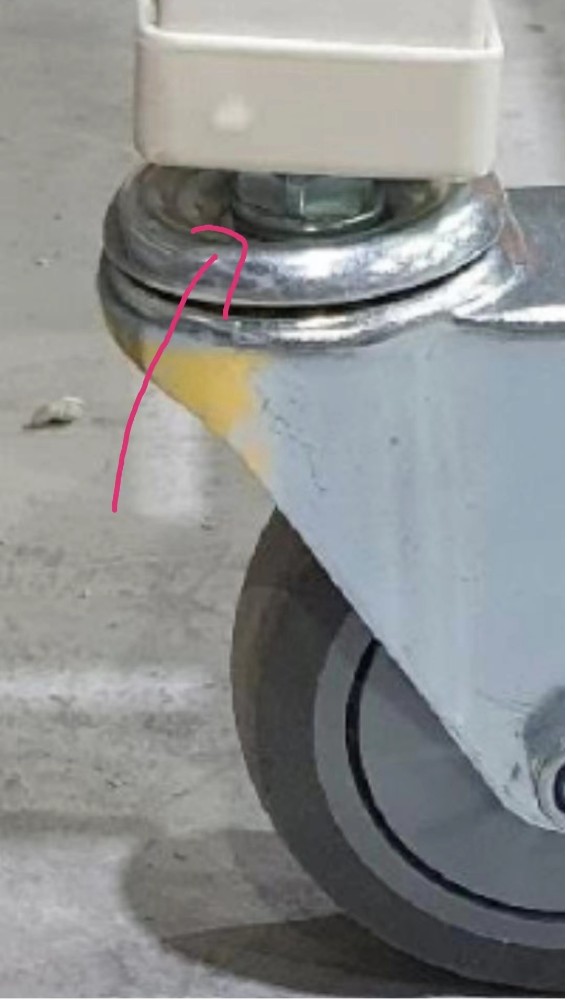Why caster threaded stem break during impact
The threaded stem of a caster can break during an impact due to various factors. In this detailed response, we will explore these factors in depth, providing a comprehensive understanding of why such failures occur.
Material Failure:
The material used in the construction of the threaded stem is crucial for its strength and durability. If the caster manufacturer uses a weaker material or if there are manufacturing defects present, the threaded stem may be more prone to breaking during an impact. Insufficient quality control during production can result in inconsistencies in the material composition, leading to weaker spots that are susceptible to failure.
Overloading:
The load capacity of a caster is designed to withstand specific weight limits. Exceeding this rated capacity puts excessive stress on the threaded stem, making it more susceptible to failure during an impact. When subjected to a force beyond its intended capacity, the stem may undergo deformation or experience structural failure. It is important to ensure that the load applied to the caster remains within its specified limits to avoid overloading and subsequent stem failure.
Improper Installation:
Proper installation of the caster is crucial for its performance and longevity. If the caster is incorrectly installed or if there are alignment issues between the threaded stem and the caster housing, it can create additional stress points on the stem. These stress points weaken the stem's overall integrity, making it more prone to breaking during an impact. Therefore, ensuring proper installation and alignment is essential to minimize the risk of stem failure.
Fatigue:
With prolonged use, a caster may experience fatigue failure. Fatigue occurs when a material undergoes repeated stress cycles, eventually leading to the development of micro-cracks. These cracks propagate over time, weakening the structural integrity of the threaded stem. When another impact occurs, the accumulated damage from fatigue can cause the stem to break. Regular inspection and maintenance of casters can help identify signs of fatigue and prevent potential failures.
Impact Angle and Intensity:
The angle and intensity of the impact play a significant role in determining the failure of the threaded stem. A direct, forceful impact at an unfavorable angle can exert excessive stress on the stem, surpassing its load-bearing capacity. Depending on the magnitude of the impact and the angle at which it occurs, the stem may experience bending, torsion, or shearing forces. These forces can cause localized stress concentrations, leading to failure. Designing casters with reinforced stems that can withstand higher loads or impacts from different angles can help mitigate this risk.
It is important to note that the aforementioned factors are not exhaustive, and other variables or combinations of factors may also contribute to threaded stem failures during impact. Consequently, without specific details about the exact circumstances, such as the caster's design, material specifications, installation method, loading conditions, and impact characteristics, it is challenging to pinpoint the precise cause. Consulting with a qualified engineer or technician who is familiar with the specific caster design and usage conditions would be advisable to determine the exact cause of threaded stem failure in a particular scenario.
In summary, threaded stem failures in casters during impacts can occur due to material failure, overloading, improper installation, fatigue, and the angle and intensity of the impact. Understanding these factors helps in selecting appropriate casters for specific applications, ensuring proper installation, and conducting regular inspections to prevent potential failures and maintain workplace safety.
 ---- bad quality ball cup / thread stem deformed during daily impact
---- bad quality ball cup / thread stem deformed during daily impact
Our medium duty casters adopt plan bearing structure,to ensure the caster steering very smooth and have good function on impact resistance. And High strength metal frame enable the caster can be used on heavy duty trolley and other moving devices which may need face frequent impact, or running on uneven grounds.



 English
English Spanish
Spanish German
German Russian
Russian Arabic
Arabic Portuguese
Portuguese Italian
Italian French
French Hebrew
Hebrew Turkish
Turkish